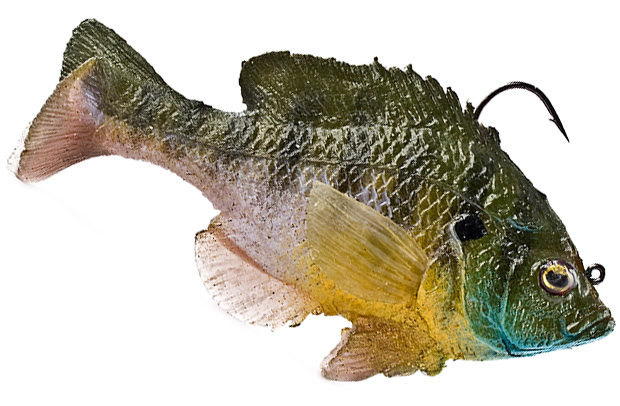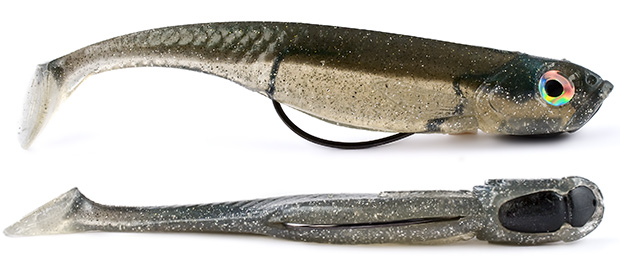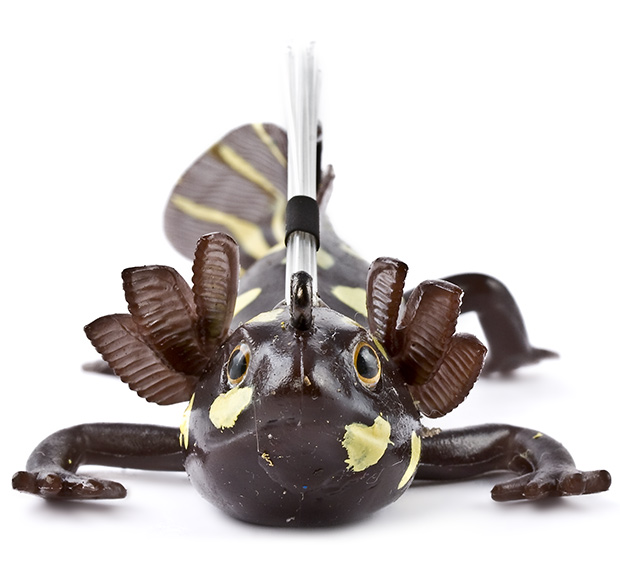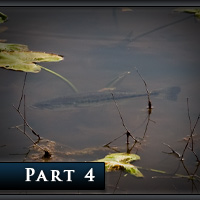
The Definitive Guide to Bed Fishing – Part IV
Published April 12, 2010 by Kevin Scarselli- Part 1: Where To Find Beds
- Part 2: Tricks For Seeing Underwater
- Part 3: What To Look For When Scanning For Bass and Beds
- Part 4: Tactics For Catching Bedding Bass
STEP ONE: Preparedness For The Day
Bed fishing (a.k.a. sight fishing during the spawn) demands a stealthier approach. Because of your close proximity to beds and bass, you must use certain tools and tactics to give yourself an advantage.
When approaching a bed, try to stop (or position) your boat without the trolling motor.
While stealth is largely overrated, the spawn is a time where it can make or break your success.
When you are beginning your approach towards a bed, build up a drifting momentum with your trolling motor from a distance, then drift, under no power, into the area you wish to sight fish from. In other words, drift into the exact location you want to target a specific bed from.
Many weekend anglers have never witnessed how Pro’s use such “stealth” tactics when approaching a bedding bass. Here are some of the key tactics pro’s use to avoid spooking a bed fish…
- Drift into the area and grab tree branches, stumps or dock pilings by hand to slow or stop their boat.
- Use a small dock line to tie their boat to branches, pilings, or docks.
- Have 2 mushroom anchors on short lines ready to be dropped at the bow.
- Use single or tandem Power Poles to anchor their location without sound.
- Use a push-pole like the Stiffy Hybrid to slow or stop their boat and move around.
- Use the trolling motor to push their boat backwards (transom-first) into shoreline brush so they won’t move or drift.
- Push their boat’s stern into the shoreline and trim down their outboard so the skeg grabs bottom and holds them in place (poor man’s Power Pole).
Most weekend bed fishermen rarely, if ever, do any of these things when setting up to fish a bedding bass. I have personally been in the boat with many Elite Series pro anglers when bed fishing, and witnessed every single stealth technique above, with the exception of using the mushroom anchors. They used these tactics over and over throughout the day. You must understand the importance of your approach and setup, and how most anglers get it wrong by not using the tricks above.
The Search: Scanning For Bass and Beds
Parts 1, 2 and 3 of this Bed Fishing Guide taught you the most effective techniques for finding and spotting bass and beds. Now that you know the tricks, let us move on to what you do once you spot the fish or nest.
In the process of spotting a bass or bed, you will have either…
- Spotted the bass and nest from a distance (the fish may not be aware of your presence or is only mildly aware)
- Gotten too close to the bass and nest and have certainly alerted the fish to your presence (maybe even spooked fish off bed)
While you certainly prefer scenario #1 (spotting bass from distance), the second scenario of being too close, alerting the fish, or even spooking it off the bed isn’t so bad either. At least you found a bed fish.
What To Do If You Get Too Close
No one is good enough to spot every bed from a distance. There will be numerous times daily that you spot a bed too late, while you’re either drifting right over it, or so close you spook the bass right off the bed.
But that is okay. You can still catch that fish.
Here’s the deal…
You need to understand that every bass has an individual personality. During the spawn, some bass are strictly devoted to staying on their bed, while others are so frightful they will swim off and never come back as long as you’re around.
Lucky for us, a good portion will come back to the nest relatively quick after we spook them off.
So here is the correct strategy to use:
If while you are scanning for beds and bass you get too close and the bass spooks off.. then as quickly as you can, drop a lure into the middle of the nest and strip line off your reel as you pull away from the nest.
The key is to get a lure into the nest as soon as the fish spooks off. Move away from the bed immediately. You are hoping that once you get distanced from the nest, the bass will return to the bed. Upon his return, he is greeted with a lure dead-center in the nest.
THIS IS WHY IT IS ULTRA-IMPORTANT TO BE HOLDING A ROD WHILE SCANNING FOR BASS AND BEDS
While there are many different lures that can work for this strategy, the best is a drop shot rig.
The drop shot is quick to deploy and can be shaked in-place for long periods without moving the sinker. Because it is on spinning gear, you can more easily strip line off the reel when quickly moving away from the nest. It is really the ultimate “quick deploy” bed fishing lure. You should always be holding a drop shot rod when scanning for beds and bass.
How far should you move away from the bed you just spooked?
Some pro’s will purposefully move very far away from the bed after dropping a bait into the nest. They reason that the fish they just spooked will more quickly return to the nest and be less weary, knowing the recent threat is further away.
This most certainly works, but at the expense of losing sight of the nest, fish and lure.
Many anglers are not confident with being able to detect such light bites from a distance, and may not want to move so far away from the bed, but rather move to a typical sight-fishing distance where they can see the fish and the lure.
Which strategy you choose is personal preference. However, I tend to move away just so far enough that if the fish returns, I can see it.
Some beds are too deep to sight fish from any distance (you can only see them and the bass from directly overhead). In these cases, you have no choice but to fish blind. Increasing the distance between you and the nest may prove beneficial in this instance.
Waiting For The Bass To Return
As you move to distance yourself from the bed, begin shaking the drop shot (or other lure) in its place. You are waiting for the fish to return to the nest.
You need to be scanning for the bass you spooked off. Keep one eye on the nest and another eye on the surroundings. Always be looking for that bass, whether at the nest or not.
The Curious On-Looker: Dealing With Bass That Stare You Down
One common and extremely fascinating aspect of bed fishing is the “curious on-looker”. That’s my made-up term for bass that swim up to your boat and stare at you.
Most anglers have never experienced this. Skilled bed fishermen, on the other hand, see this almost daily during the spawn.
What the “Curious On-Looker” Is… And What It Means To You:
Here’s what happens…
You find a bedding bass. He becomes aware of your presence. You see him leave the bed and swim out to your boat. He’ll swim to within 5-10 feet of you. The bass stops and begins staring at you. His nose points directly at you. Even if you were to move your boat or if you were to walk to the stern of your boat, the bass’ nose and eyes will follow you.

When this happens (and it happens daily to a hard-core bed fisherman), it’s not a good thing. But it isn’t the end of the world, either.
The fish is very aware of your presence and is inspecting you. The Curious On-Looker will generally stare at you from anywhere between 1-5 minutes before swimming off. It will either go back to the nest or somewhere else you don’t see.
What To Do When A Bass Stares At You
If a bass swims up to stare at you, there are a couple things you need to do. They are…
- Try to have a lure in the nest before he swims up to you. You never want to have a bass watch you cast that close. Plus, you want a lure already in the nest when he returns.
- Don’t move a lot. You may want to try crouching down. I’ve even laid down on the deck of the boat.
- DO NOT take your eyes off the bass. Never lose eye-contact.
Last year I was out with Skeet Reese and one particular bed fish (a 6 pounder) was continually swimming away from the nest and up to the boat to stare at Skeet and me (a Curious On-Looker). The bass would stare for a minute or two before retreating to go back to the nest. After this happened a couple times, we both got down low in the boat so the fish couldn’t see us as well. This is the correct strategy when dealing with “curious on-lookers” that like staring at you.
One important note…
Never cast to a Curious On-Looker off the bed. The mere act of casting usually spooks them off. Even if you did land a lure near them, they are so weary at this point you’d be hard pressed to see a strike.
Some Anglers Give Up On Curious On-Lookers
While Skeet certainly doesn’t, I know some anglers (and pro’s) that feel once a bass comes up and stares at you, that fish is so weary it isn’t even worth bothering to fish for anymore. I’ve personally been in the boat with some that have given up on a fish once that fish swam out to stare at them.
But, in case you are wondering, Skeet went on to hook that 6 pounder, but unfortunately lost it during the fight. So there’s first-hand proof that even with a big bass that came up to stare many times, you can still catch it. And why I am not deterred from the “Curious On-Looker”, and you shouldn’t be either.
Lastly, never take your eye off a staring bass. When that bass swims away, it doesn’t always swim straight back to the nest. Often it will swim away in some other direction and make a wide loop back to the nest. Keep your eye on the bass and you’ll be able to see where he goes hopefully.
The Search: What You Are Going To Find
Let us now start over and discuss the typical scenarios you will come across when scanning the shorelines and bottom for bass and beds.
There are 4 different scenarios you will encounter. You will spot one of the following…
- Two Bass (male and female) on a bed
- One bass (male or female) on a bed
- An empty bed with no bass visible
- A bass (or two bass) with no visible bed

Let us explore the intricacies of fishing a bed with one bass versus a bed with two bass (male and female).
Fishing A Bed With Both Male and Female Present
Let’s pretend you were scanning the shoreline bottom and spotted a bed with a male and female off in the distance. For this example, the fish were not alerted to your presence (not that it really matters for this example).
The first thing you need to do is gauge the size of both bass. As a general rule, most people guess bed fish to be smaller than what they really are. When I first started bed fishing, I would always guess a pound short of what they would turn out to be once I got them in the boat.
Do you want or need to catch the smaller male? The male will always be the smaller of the two. A male at most can be a couple pounds, and is usually only a 1 to 1.5 lbs.
The smaller male is generally the protector and aggressor. Though the female is just inches away, the male is generally the one that removes intruders from the nest. So expect the male to be the one showing interest in your lure.
If The Male Bites First, Do You Catch It?
There are some differing opinions and theories the pro’s have as to the correct strategy to this. Some pro’s are happy to quickly catch the male, regardless of its size, while others will do everything in their power not to catch the smaller male.
Here is the reasoning behind each theory…
Anglers Who Don’t Mind Catching The Male Immediately
Because the male is the aggressor, it will usually be the first to bite. Many pro’s and experienced bed fishermen will set the hook immediately on a biting male. They see the male as a distraction. The male only stands in the way of fishing for the female. So by catching the male and putting it in the livewell, they have eliminated the nuisance that prevents them from focusing on the big fish.
Anglers Who Try Not To Catch The Male
Other bed fishermen see hooking the male as a risk. You can risk scaring the bigger female when reeling in the male. Even if she isn’t spooked, the female may abandon the nest because of the absence of a male. If this happens, you have ruined all chances of catching that bigger female.
Because of these reasons, these anglers will not set the hook on the male if the male grabs the lure. Males often grab the lure and swim off hurriedly with it. These anglers refuse to set the hook and will wait for the smaller male to drop the lure. When the lure is dropped, the angler reels it back for another cast to the bed, hoping this time the female will be first to bite.
Will The Female Bite With The Male There?
This is the question that will run through a bed fisherman’s mind when dealing with a male and female.
Since every set of bass have unique personalities, there is no way of knowing for sure. Many anglers will let the male grab the bait 3 times without setting the hook. If he grabs the bait a fourth time, the angler will set the hook, assuming that bass is more of a nuisance than risk.
Other options include bumping the female with your lure hoping to illicit a reaction strike. But we will get to this strategy later on.
From what has been taught to me by top Pro’s and from my own bed fishing experiences, I am not hesitant to catch the male if he bites. The male is too often an obstacle in your way to the bigger female. So I will set the hook on the male if he bites. If the female abandons the nest when I take away the male, there is a way to get her back…
Bringing The Female Back To The Bed After You Catch The Male
The best-case scenario after catching the male is the female stays locked on the bed and becomes the aggressor, leaving you a much better chance of catching the female than if the male was still present.
As we mentioned though, the risk associated with catching the male first is having the female leave the bed or become hyper-weary.
The worst scenario is the female leaves the nest permanently (or at least longer than we’re willing to stick around for).
The 2nd worst scenario is the female starts showing weariness. By catching the male, we have alerted her to our presence. A lot of times, this is when bass become “Curious On-Lookers”. They will swim away repeatedly from the nest, come right up to the boat, and stare at us.
If after catching the male, the female abandons the bed, you might be in deep trouble. Wait a couple minutes and see if she returns. If she does not, you are left with two options:
- Keep the male and move on to fish another bed
- Place the male back in the water hoping it will lure the female back onto the nest
In this particular instance, your best strategy is to move on to the next bed. You made a calculated risk catching the male, and it didn’t pan out. You can mark the bed with a waypoint symbol and try back later in the day too.
If you really want that female (maybe it’s a monster), you can attempt to place the male back in the water in hopes he will corral the female back onto the nest. Many times the female is still close-by, and the male will bring the female back on to the bed.
But when a female just up and leaves a nest and is no where to be found, that is a low-percentage play. Cut your losses and be happy to at least have the male in the boat.
When Should You Release The Male Then?
You should release the male if you are getting only temporary abandonment from the female. In other words, the female is weary of your presence and is leaving the nest often when you are casting or working your lure. The bass may become a “Curious On-Looker” and stare at you boat-side repeatedly. The female hasn’t left completely, but it is no longer “locked on” the bed.
This is the perfect scenario for releasing the male. By placing the male back in the water, you have a good chance at bringing the female back onto the bed and trying again.
Going back to that 6 lb. female that continually left the nest to stare at Skeet Reese and me… Skeet eventually made the decision to take the male he caught off that bed out of his livewell and release it in hopes to get the female to lock on the bed more. So understand this tactic can work so well that even a top tournament angler, like Skeet Reese, is willing to take a fish out of their livewell when bed fishing.
How To Work A Bed Fish
We’ve covered quite a bit so far, but are yet to cover an important aspect of bed fishing… the techniques and strategies of actually fishing the bed and bass.
Let’s clear our minds and start over again with a new example…
You were scanning for beds and bass and spotted a bed with fish on it. It could be one fish or two fish… it doesn’t really matter for this example.
How Far To Position Yourself Away From The Bed
Generally, you want to be able to see the fish throughout the entire fishing process. So you should be distanced as much as possible from the bed, while still being able to see an outline of the fish. This may be 10 feet or 30 feet. It all depends on depth, clarity and glare.
Many anglers also like to be close enough so they can see their lure in the bed. I strongly favor being able to see the lure in the bed, and so should you. But not every instance will allow it. To make matters worse, some lures are so small (ie. 3″ drop shot bait) or faintly colored that it is near impossible to see from a distance. You’d rather sacrifice not seeing your tiny finesse lure than getting very close and alerting the fish. There is a lot of “give and take” with so many differing scenarios that arise.
Do Some Bed Fishermen Start At A Distance They Can’t See The Fish From?
Yes. But not many.
A few top anglers will position at a distance where the fish are barely visible when standing up. Then the angler will get down on his knees to make his cast and work his bait. On his knees, he is unable to see fish or lure, but may gain an advantage by not alerting the bass.
But know, by not being able to see the fish or lure, you then are only left with feeling for a strike, and never knowing if the fish took the bait in its mouth all the way. This is something few top bed fishermen are willing to give up initially. If the bass becomes weary, you may have to get low in the boat and sacrifice sight to catch them. But you are better off seeing the fish and lure in the bed when making your first casts.
Before The First Cast
You are now positioned so you can see the bass. There is one final thing to do before you make your first cast…
Spend 20-30 seconds analyzing the fish.
Before making your first cast, you want to spy on the bass for a bit. Figure out what the bass is/are doing.
Things you should ask yourself:
- Is the female not directly on the bed? (She may be sitting just off the bed)
- Is a particular fish moving around or sitting still? (Moving fish tend to be more aggressive, which is good)
- Which direction is the fish facing? (You’d rather not cast when the fish is looking in your direction)
- Can you spot the “hot zone” in the nest? (Often the very center; Often shiny pebbles or stones)
- Has a fish moved off and on the bed during this time? (May show a lack of bed lockdown)
- Are the fish mating? (If they appear to be rolling on each other – this makes catching them much more difficult)
Bed fishing is all about having a solid game plan. Taking 20-30 seconds to gather intelligent information such as above will improve your chances tremendously. Your decisions later on with this bed may hinge on the information you gather before the first cast. It is absolutely critical.
The Cast
You are now ready to cast your lure.
Try to cast when the fish is looking away from you, if at all possible. Some fish will be looking in your direction and will never turn around to give you a chance to cast when they aren’t looking your way, so don’t sweat it too much. But if you can wait for the fish to turn so it is looking away on the first cast… even better.
Where To Cast
You always want to cast at least 10-15 feet beyond the nest and bring the lure to the nest underwater.
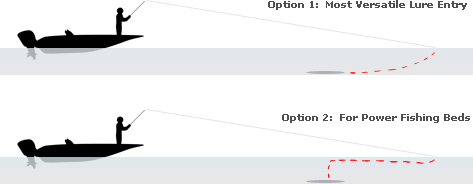
Some beds will be right up against the shoreline and force you to pitch right on top of the bed, though. That’s fine. You have no other option in this case. If you can cast up on shore and pull the lure into the water, do that. Splashing a lure into the water on top of bed fish usually spooks them, so do it in as few instances as possible.
Roll Casts and Pitches Catch Bed Fish
An overhand cast spooks more fish than the underhanded roll cast or pitch. So if at all possible, switch to roll casting and pitching when targeting bed fish.
Also, skipping a bait such as a tube or swimbait past the bed can often scare a fish less than tossing one through the air, and is why many pro’s skip their baits a lot over beds during the spawn. Fish are generally freaked out by anything that flies, but are quite relaxed with baitfish and insects sputtering across the surface.
You should still cast your lure through the air mostly, and try skipping with more weary bass.
Game Time: Eliciting A Strike
Here is where things get really interesting…
What lure you cast first is dependent on two things:
- Is there only one fish on the bed?
- Is there a male AND female on the bed?
If there is a male and female (#2) on the bed, you then ask yourself this:
- Do I want to take a big shot for the female right off the bat?
Maybe you could care less about the male because it’s only a pound. Or maybe you need the quickest 1-pound addition to your limit 10 minutes before check-in. Only you will know what your goal is at that moment.
So if your goal is to make an attempt for the female right off the bat, here is a deadly technique to use…
Cast a 6″ Osprey Winged Talon beyond the bed and slowly swim it right over top of the female.
The Osprey Winged Talon (modified) is a pretty bulky line-thru swimbait. It has a treble on the bottom and this particular swimbait has very good hook-up and landing ratios because of the line-thru design.
The reason for swimming the big swimbait near the female is two fold. You are trying to eliminate a bite from the smaller male, who may not have the willpower to attack something that big, and you are effectively targeting the bigger female with a very realistic big bait.
This does not work all the time. But it does work enough to put into your regular arsenal of bed fishing tactics. It’s the quickest and easiest way I know to pick off a female that shares a nest with a male.
If you cast once and the swimming swimbait doesn’t even get a look, don’t make another cast with it. In fact, anything short of hyper-interest in it should make this tactic a “first cast attempt only”. Any more and you run the risk of over-agitating the bed fish before hitting them with a higher-percentage lure like a drop shot.
The Risk of Throwing The Big Swimbait First
Every once in awhile you’ll spook a fish off a bed tossing that big swimbait over the nest. But if that happens, that fish is probably so weary anyway that it’d be a tough catch. I don’t want to overstate this risk, but there is a slight risk you’d spook a fish with the swimbait that otherwise could have been caught with a drop shot, for instance.
Forgetting the “First Cast Swimbait”
I generally reserve the “first cast swimbait” tactic for ‘two bass’ beds when I want to target a female that is four pounds or more. While much smaller bass will hit the 6″ Winged Talon, it is a less frequent occurrence. So reserve this technique for bass that look to be 4 lbs or more.
If you are not going to try a swimbait right off the bat, here is your game plan…
First Cast: Drop Shot Rig
All things considered, a drop shotted bait may be the finest bed fishing lure available.
Because of the drop shot’s design, you can work a soft plastic lure in one-spot for a very long time. With other lures, such as tube baits, shaky head worms, or jigs, shaking in-place is a bit more difficult without moving the lure.
Also, the drop shot makes a quiet entry into the water.
You should try to use a drop shot bait that is on the smaller-side. Baits that are 3 to 5 inches in length are ideal. The reason a smaller lure is preferred is so you have a better chance of having the bass bite the hook-end of the lure. Since bed fish will often nip at baits, a longer worm of say, 7-inches, would be very troublesome. The bass will nip at the middle of the worm and never touch the hook.
Great drop shot baits for bed fishing include the Basstrix Bait Fry and Fat Minnows, Roboworm Straight Tail Worms and the Jackall Superpin Tail Shad. Colors honestly don’t matter as much when bed fishing, but in a follow-up bed lure guide, we’ll discuss the most effective for each lure.

Your drop shot leader-length should range from 8 to 15 inches. For beds out in the open, I’d prefer a 15″ leader. And for beds close to cover, I favor the 8″. The drop leader is rigged at either 10 or 12 inches for overall versatility with one rod.
One Huge Drop Shot Disadvantage
The drop shot has one major disadvantage…
It can’t be skipped.
If a bed is up under a dock, branches or any other overhanging cover, you’ll have to switch to different lure. We will cover this shortly.
Go Time: Analyzing The Fish’s Response
For this example, let’s assume this is your first time bringing a drop shot (or other lure) into the nest.
At this point, all eyes should be on the fish.. not your lure.
Your goal is to get a read as to the overall aggressiveness of the fish. Positive signs are:
- The fish turns on the lure (moves towards or faces the lure with high-interest)
- The fish positions “nose down” facing the lure.
- The fish attacks the lure
All three of these scenarios are good signs that you’ll probably get a chance to catch a fish. Again, if the bed has both a male and female, the male may be the initial aggressor and you may have to catch him first.
The more intense the movement towards your lure, the better. A bass that may prove difficult to catch is one that shows little interest in your bait. Signs of little interest is lack of movement, or even a slow backing up away from the lure.
Let’s cover some of the negative signs you don’t want to see…
- The bass spooking off the nest
- The bass showing little interest in the lure by not turning on it or moving at all towards it
- The bass looking at the lure but backing up away from it slowly
Let’s talk in detail about the most important negative sign to look for…
The Worst: Bass Leaving The Nest
If the bed has just one bass on it and it spooks very easily on your initial cast or retrieve, that is not good. Many experienced bed fishermen may abandon this fish completely after seeing this. Generally speaking, if a fish spooks that easily, it isn’t locked down on the bed enough to make it bite. Sticking around any further may prove to be a fruitless endeavor.
If the bed has both a male and female, then usually it can pan out differently.
If the female leaves the nest on your initial cast or retrieve, then you want to look for two things…
1. Does the male stay locked on the bed and show interest in the lure?
or…
2. Does the male chase after the female and attempt to corral her back to the nest?
If #2 happens (male attempts to bring back female), then wait for the male to bring her back and try one more time.
But here is something crucially important to know…
Because the male is actively bringing the female back to the bed, that means the female will most likely leave the bed again in the absence of a male. So if you were to then catch the male, that female may leave and never come back. You must then be very careful to not hook the male if he bites your lure, and try to target the female only.
Second Worst: Showing No Interest In Your Lure
This negative scenario isn’t all that bad. Just because a bass doesn’t show interest in one lure does not mean it won’t violently attack another. This is critical to remember.
The entire time you are bed fishing, your eyes need to be fixated on the bass. You need to be analyzing the fish’s behavior to every thing you do.
Identifying The Sweet Spot On A Bed
Every bed has a “hot zone” or “sweet spot”. This sweet spot is a tiny spot on the nest that the bass will defend greatly more than the others. The sweet spot is usually where the eggs are, or are going to be, laid.
The key with bed fishing is to quickly find the sweet spot and concentrate your presentation as much as possible to the sweet spot. This is where you’ll have the best chance of getting a bite.
What A Sweet Spot Looks Like
Not every sweet spot is visible, but sometimes it is. You’ll often notice a small group of shiny stones or pebbles lying in the middle of a nest. Most of the time this is the sweet spot you need to focus on. It’s the spot that has been fanned out and cleared out the most by the male for the eggs.
The Lure Selection Strategy
If there is a time of year where having 13 rods on the deck of the boat is an advantage, the spawn is it.
Every bass has a different personality. You will find that some bass react well to small finesse baits. Others will react better to huge baits (like an 8″ tube). Some will like natural colors like green pumpkin, while others will ferociously attack bright whites, pinks or chartreuse.
Having a variety of rods and lures rigged and ready is a massive advantage. If you only have a few rods to work with, then be prepared to retie quickly and often. While I would never use one of those “speed clips” in any other circumstance, if I only had 1 or 2 rods, I would probably use one for the speed of changing lures.
If you have few rods, you may even want to have out, ready to go at moment’s notice, the lures we discuss shortly. Speed and constant onslaught of lures into the bed is critical. The time it takes to tie on a new lure may cause the building agitation in a bass to fizzle away.
The Correct Plan of Attack
RULE: If you are confident you can get the fish to bite, give the bass something that can easily fit in its mouth.
Remembering just this one rule will put you way ahead of the pack.
Let’s say you notice the fish gets very aggressive when you throw an 8″ tube into the bed. He darts towards the monster tube and bites it. You set the hook but miss. Reel that tube in as fast as you can and immediately fire out to the bed a smaller lure.
That fish is ANGRY now. It is aggressive right now. A big tube has a much lower hook-up ratio than a drop shot. So take advantage of his anger at that very moment and give the bass something easy to hook him with. Do NOT throw the big tube back out there. Throw the smaller lure with the better hook-up potential.
This is why it is paramount to analyze the movements and behavior of a fish on a bed, both before your first cast and during your retrieves. You are constantly analyzing the build up, or waning, of interest and agitation to your lures. The key is to quickly build the bass’ interest at a feverish rate, eventually forcing him to attack your lure out of pure anger.
If you fish a lure in the bed over and over, and notice the fish’s interest waning or remaining stagnant, that is your cue to switch lures. Just like how an NFL defense will constantly mix up their pass rush and blitzes to confuse the quarterback, we must be flexible in our approach to better push each fish’s hot buttons and force a strike.
Lure Rotation: The Correct Sequence
We’ve stated already that the drop shot is an effective first lure to use on a bed fish. Let us now run through a complete rotation of lures and presentations. These lures will be used in your sequence of attack.
How many casts you give to any particular lure is purely subjective. For instance, if you make a first cast into a bed with one bass, and before you get your lure into the bed the fish turns around, facing away from your lure, that fish may not even know your lure is present in the bed. It isn’t your fault.. it’s just bad timing and circumstance.
Only you will know if a lure is being effective in moving the bass towards an aggressive, striking response.
Your Second Lure Choice
For example, let us assume you’ve worked a bed with a drop shot a couple times without a strike. The fish is showing little interest in your offering.
At this point, it is wise to try a different lure.
My favorite first follow-up to the drop shot rig is a soft-plastic crawfish that is 3-4″ long.
One particular lure that performs extremely well for this is the River2Sea Super Yabbie or Stand’n Yabbie. Another is the Huddleston Huddle-Bug. Both look extremely realistic and have tremendous action with very light line twitches.
Again, we are staying away from the larger lures this early on. If we can get a quick strike, we want it to be on a lure that is easy to hook-up with.
The Super Yabbie or Huddle-Bug should be worked just like the drop shot. Inch it slowly through the bed and twitch it in-place on the sweet spot.
Your Third Lure Choice
You need to make a choice between two lures…
The 3/8 oz. jig or the 1/4 oz. shaky head worm.
Which Do You Choose and Why?
If you are relatively close to the bed, have good visibility and are within pitching distance, then certainly go to the jig. These conditions lend itself to being closer to a bed. A 3/8 oz. jig in a bluegill color pattern will give you a good chance at a reaction strike. More so than the shaky head.
If you are relatively far away from the bed, are dealing with poor visibility or are in open or sparse cover, then the shaky head is the better choice.
Jigs: Reaction Strikes On Beds
A flipping jig is one of the best bed fishing lures. But when bed fishing, you fish it entirely different than you would any other time of the year.
Fish it with power!
The key to bed fishing a jig is…
- Speed
- Power
- Precision
Here is what you do…
Pitch the jig past the bed and quickly retrieve it just under the surface till you get it above the bass on the bed. Then drop the lure quickly right in front of the bass. If the bass doesn’t hit it as soon as it hits the bottom, give it one quick and sharp hop again. If no bite, reel it back in as fast as you can and repeat.
Speed: The speed of your presentation and casting should be extremely fast. You are looking to wear out the fish with constant bombardment.
Power: This is power fishing. You may have to make 20 pitches in 5 minutes to get bit. But its the constant onslaught that will trigger the strike.
Precision: This is where things get interesting. If you don’t get bit on your first couple of quick pitches, you may need to start bumping the fish with your lure to trigger a reflex strike. After about the 3rd or 4th pitch, try to drop the jig onto the nose of the bass. If that agitates the fish, continue to bump his nose with consecutive casts. Some bass will not respond too well to being bumped in the nose, so you can try bumping the lure into their tail. Lastly, if none of that works, try making your line touch the dorsal fin of the bass. Most fish go nuts when something touches their dorsal fin unexpectedly. It scares them quite a bit. So try to trigger them with that and hop the jig right into the center of the nest right after.
The Shaky Head Worm
The Shaky Head worm couldn’t be further from a jig in terms of the bed fishing presentation style. But the shaky head worm offers you one last chance at a high-ratio hook up before moving on to the bigger, heavier lures.
You want to fish the shaky head just like the drop shot and plastic crawfish. Inch it into the bed and lightly twitch it in-place.
Again, you don’t want to use anything longer than 4 to 5 inches. I recommend sticking to a 4″ finesse worm. The smaller worm gives the fish a better chance to strike the part of the worm that has a hook in it.
Keep the colors very natural. Green pumpkins, watermelons and the like.
I use a 1/4 oz. Strike King Shaky Jighead or a tungsten Ikey Head Jig with a 4″ Strike King 3X Finesse Straight Tail Worm. You need to use a worm that has a buoyant enough tail to float up off the bottom when still. A worm tail that points up off the bottom will give you many more bites.
Your Fourth Lure Choice
If you are wondering by now how often you’ll have to go four lures deep in rotation on one single bed fish, the answer is…
All the time. Welcome to bed fishing!
The fourth lure in the rotation is where things get FUN. It is time to break out the big guns.
Monster Tubes: Make ‘Em Mad
There is perhaps no lure on the market that triggers such a quick response from bed fish as a monster tube bait. Tubes like the 7″ Giant Tora Tube, 7.5″ Picasso Ish Tube and Reaction Strike Tube, Jr. texas-rigged with a monster 10/0 to 12/0 hook and 3/8 oz tungsten bullet weight. More rigging details will be in a follow-up bed lure guide.
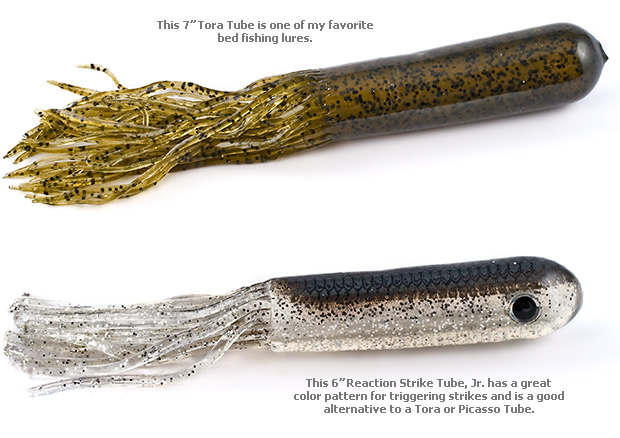
Cast it beyond the bed and pull it right into the middle of the bed and start twitching it. Usually the tube elicits a reaction strike, so bites come quick.
Monster Tubes: Poor Hook-Up Ratio
Because you are dealing with such a big, bulky bait, there is a tendency to miss on your hookset. You should always try to set the hook by sight, not feel. You want to see that the tube bait is in enough of the bass’ mouth before setting the hook. Often the fish will push the tube, or even bite a small portion of it, preventing you from hooking it. Wait for the fish to take the tube fully before setting the hook.
Your Fifth Lure Choice: Mattlures Ultimate Bluegill Swimbait
If the monster tube doesn’t do the trick, move right on to the Mattlures Ultimate Bluegill.
This very realistic soft-plastic bluegill swimbait is not meant to be swimmed through the bed. It should be jigged and twitched, very much like a tube bait.
The Mattlures Ultimate Bluegill is weighted so that it sits “nose down” when lying on the bottom. This makes it look like it’s feeding on eggs.
Cast it beyond the bed and swim it into the bed and drop it down. Twitch your line in-place and make the bluegill look like it is feeding. If the bass doesn’t seem interested, you can start giving sharper twitches, popping the lure off the bottom in hopes to get a reaction strike.
Soft Bluegill Swimbaits: Hook Configurations
The Mattlures Ultimate Bluegill has a single hook on top of the bait. While there is a hook hanger on the belly for the addition of a treble hook, you shouldn’t add one.
Many bed fishermen prefer having trebles on the bottom of the bait, claiming you get a better hook-up ratio. This may be true, but you also risk two things:
- Hooking the fish outside the mouth (illegal in tournaments when sight fishing)
- Snagging bottom (potentially ruining your chances)
If you are in a tournament, then absolutely do NOT use a bottom treble.
If you did use one, and snagged something on or near the bed, that could ruin all chances of catching fish off that nest. Beds can be in open water or right next to snaggy stumps.
And if you snag the fish outside the mouth, you can’t weigh-in that fish. The treble hook is too much of a risk.
If You Miss On The Hookset With A Monster Tube or Bluegill Swimbait
Both lures have lower hook-up percentages, but if you were to miss on a hookset, it isn’t a big deal. Follow up immediately after the miss with a much smaller lure, like a drop shot. If you are quick, you can take advantage of their agitated state with a lure that is easier to hook-up with.
Your Sixth Lure Choice: 3:16 Mission Fish
The 3:16 Mission Fish is a texas-rigged soft-plastic swimbait that excels on beds when twitched and jigged. While it certainly can be swam though the nest, you are much better off twitching it in-place on the bottom.
A jigged or twitching swimbait is something rarely seen by bass. Because of it’s ultra-realism, you can often draw a vicious strike.
The 6″ version with a sharp 6/0 hook in any natural shad-type color works great.
Your Seventh Lure Choice: Nest Raider
Here is a lure that was made specifically for bed fishing.
The River2Sea Nest Raider looks just like a big lizard. You want to bring it in to the bed and start twitching it in-place.
Don’t be afraid to leave it in the bed for minutes at a time. Though many of your bites with this lure come immediately, you may need to work on the fish and build its anger over time.
The Nest Raider comes in a couple different colors, but I like the black w/ yellow spots. Don’t use the green pumpkin like colors. If you are going to be fishing a lizard, make sure it stands out as a lizard.
If Nothing Works
If you go through this rotation of lures and cannot elicit a strike, you have two choices…
- Mark the bed and try back later in the day hoping the bass is in a more aggressive state
- Give up on the fish entirely
While you certainly could continue to throw an onslaught of new lures at the bass, knowing when to give up on a fish is of utmost importance.
I usually try one last cast with the drop shot, or maybe a small tube bait, before leaving the fish. If you don’t get a strike, you have to erase it from your mind and move on to the next.
Not Every Bed Fish Will Bite
Don’t trust anyone who tells you it is possible to catch every bed fish.
Not even the best pro’s and bed fishermen in the world can catch every bed fish. It can be just as frustrating for them.
The Crazy Last Ditch Effort
If you have tried everything to catch a particular bed fish, but to no avail, here is a tip that works occasionally (it is low-percentage chance, but does work sometimes)…
Pull right up to the bed so you are able to drop a lure straight down into the nest.
Because you pull up so close to the nest, the bass will spook and swim off (some actually stay locked on). But the fish will most likely still be close by watching.
Use a 4″ tube or any other bulky flipping bait with a pegged 1 oz. Tungsten sinker and jig the lure violently up and down in the middle of the nest. You want to pop the lure up and down at least a foot and do it as fast as you possibly can. Continue this for up to 2 or 3 minutes.
In some cases, this will anger the distanced female so much, you’ll see the female swim as fast as she can into the nest and strike the lure. The last time I tried this technique I caught a 4 lb female on about 4 feet of line from the tip of my rod.
This does not work often, but is certainly worth a try as a last ditch effort.
Be careful not to let your lure hit bottom when you are jigging it. You do not want to destroy the nest with such a heavy sinker. Jig it just barely above the bottom so it never touches the bed. I cannot stress this enough.
- Part 1: Where To Find Beds
- Part 2: Tricks For Seeing Underwater
- Part 3: What To Look For When Scanning For Bass and Beds
- Part 4: Tactics For Catching Bedding Bass
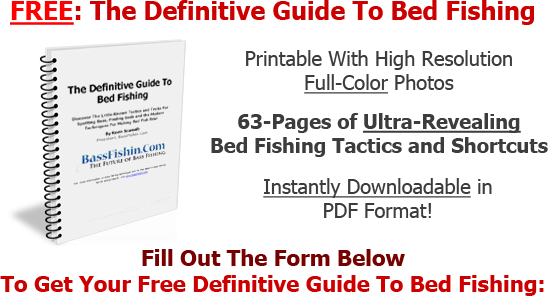
Products Mentioned In This Guide:
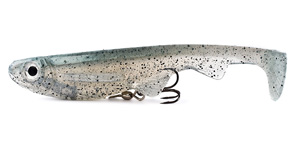
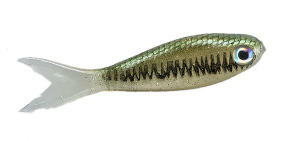
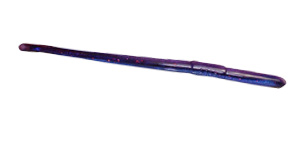
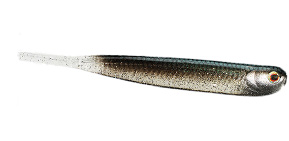
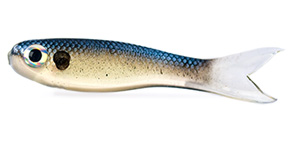
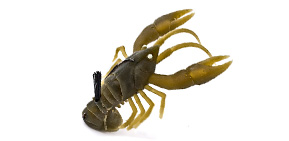
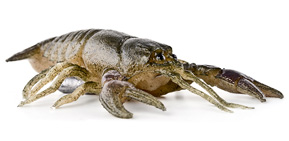
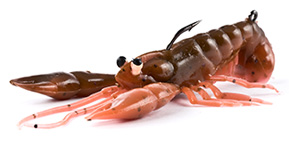
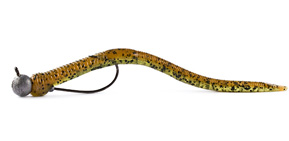
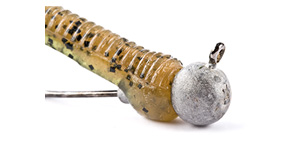
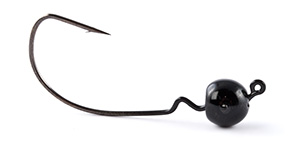
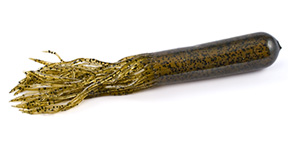
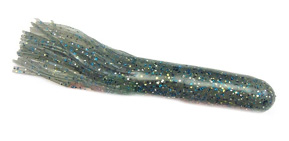
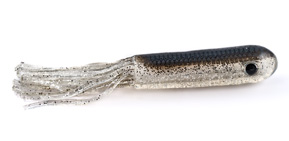
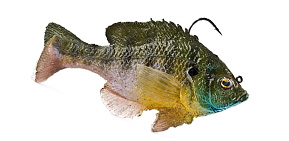
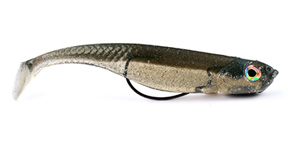
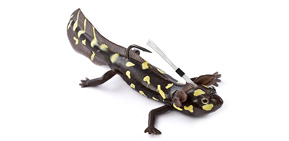
- Part 1: Where To Find Beds
- Part 2: Tricks For Seeing Underwater
- Part 3: What To Look For When Scanning For Bass and Beds
- Part 4: Tactics For Catching Bedding Bass






